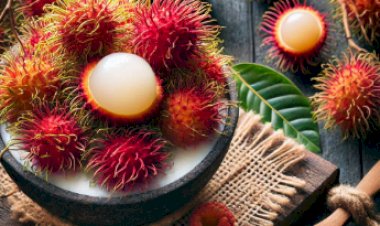Seasonal Cooking: The Benefits of Fresh, Locally Sourced Ingredients
Elevate your culinary experience with seasonal cooking. Discover the benefits of using fresh, locally sourced ingredients that are at their peak flavor during a particular season. Get inspired with examples of seasonal dishes and tips for successful seasonal cooking.
Seasonal cooking is the art of using fresh, locally sourced ingredients that are at their peak flavor during a particular season. By cooking with seasonal ingredients, you can create delicious, nutritious meals that are both affordable and sustainable. In this article, we'll explore the benefits of seasonal cooking and provide some examples of seasonal ingredients and dishes.
Benefits of Seasonal Cooking
-
Health Benefits - Seasonal ingredients are fresher and contain higher nutrient levels, making them healthier for you and your family.
-
Environmental Benefits - By cooking with locally sourced, seasonal ingredients, you reduce the carbon footprint of your food and support local farmers.
-
Cost Benefits - Seasonal ingredients are typically less expensive than out-of-season produce, allowing you to save money on your grocery bill.
Examples of Seasonal Ingredients and Dishes
-
Spring - Asparagus, artichokes, peas, fava beans, strawberries, and rhubarb are all in season during the spring months. Some delicious spring dishes include asparagus soup, roasted artichokes, spring pea risotto, and strawberry rhubarb pie.
-
Summer - Tomatoes, zucchini, corn, peaches, and watermelon are all in season during the summer months. Some delicious summer dishes include gazpacho, grilled zucchini, corn chowder, peach cobbler, and watermelon salad.
-
Fall - Apples, pumpkin, butternut squash, pears, and cranberries are all in season during the fall months. Some delicious fall dishes include apple crisp, pumpkin soup, roasted butternut squash, pear and blue cheese salad, and cranberry sauce.
-
Winter - Brussels sprouts, beets, sweet potatoes, citrus fruits, and pomegranates are all in season during the winter months. Some delicious winter dishes include roasted Brussels sprouts, beet and goat cheese salad, sweet potato casserole, citrus salad, and pomegranate salsa.
Tips for Seasonal Cooking
-
Shop at Local Farmers Markets - Local farmers markets are a great place to find seasonal ingredients and support local farmers.
-
Plan Your Meals in Advance - By planning your meals in advance, you can ensure that you're using seasonal ingredients and avoid the temptation to buy out-of-season produce.
-
Experiment with New Ingredients - Seasonal cooking allows you to try new ingredients and experiment with new flavors, so don't be afraid to try something new.
Conclusion
Seasonal cooking is an excellent way to create delicious, nutritious meals that are both affordable and sustainable. By using fresh, locally sourced ingredients that are at their peak flavor during a particular season, you can enjoy the benefits of seasonal cooking and explore new flavors and ingredients. So, next time you're planning a meal, consider using seasonal ingredients to create a delicious and healthy dish.

 Ashish Kumar
Ashish Kumar 














